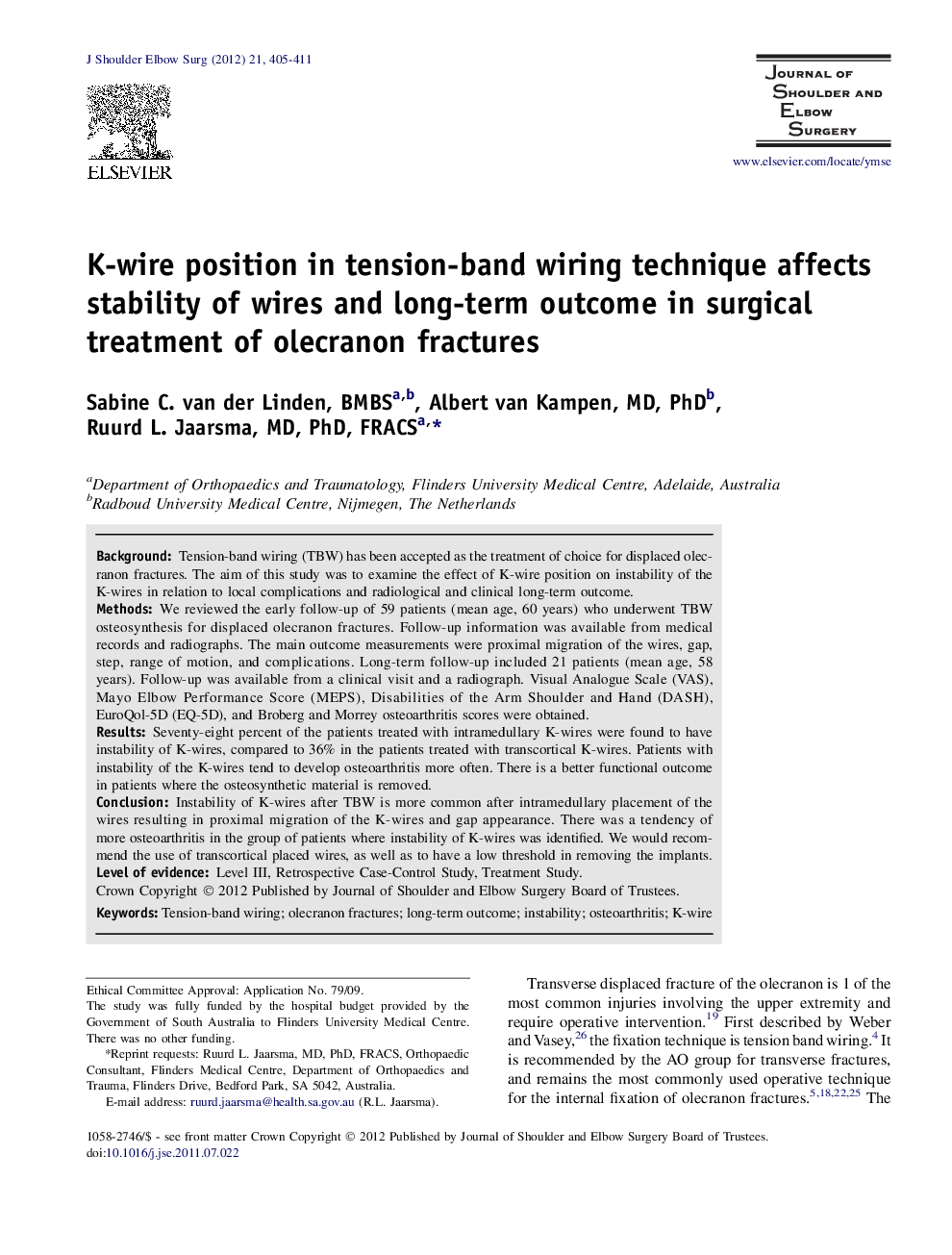| کد مقاله | کد نشریه | سال انتشار | مقاله انگلیسی | نسخه تمام متن |
|---|---|---|---|---|
| 4074608 | 1267015 | 2012 | 7 صفحه PDF | دانلود رایگان |

BackgroundTension-band wiring (TBW) has been accepted as the treatment of choice for displaced olecranon fractures. The aim of this study was to examine the effect of K-wire position on instability of the K-wires in relation to local complications and radiological and clinical long-term outcome.MethodsWe reviewed the early follow-up of 59 patients (mean age, 60 years) who underwent TBW osteosynthesis for displaced olecranon fractures. Follow-up information was available from medical records and radiographs. The main outcome measurements were proximal migration of the wires, gap, step, range of motion, and complications. Long-term follow-up included 21 patients (mean age, 58 years). Follow-up was available from a clinical visit and a radiograph. Visual Analogue Scale (VAS), Mayo Elbow Performance Score (MEPS), Disabilities of the Arm Shoulder and Hand (DASH), EuroQol-5D (EQ-5D), and Broberg and Morrey osteoarthritis scores were obtained.ResultsSeventy-eight percent of the patients treated with intramedullary K-wires were found to have instability of K-wires, compared to 36% in the patients treated with transcortical K-wires. Patients with instability of the K-wires tend to develop osteoarthritis more often. There is a better functional outcome in patients where the osteosynthetic material is removed.ConclusionInstability of K-wires after TBW is more common after intramedullary placement of the wires resulting in proximal migration of the K-wires and gap appearance. There was a tendency of more osteoarthritis in the group of patients where instability of K-wires was identified. We would recommend the use of transcortical placed wires, as well as to have a low threshold in removing the implants.
Journal: Journal of Shoulder and Elbow Surgery - Volume 21, Issue 3, March 2012, Pages 405–411